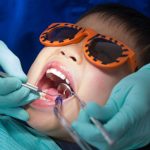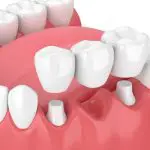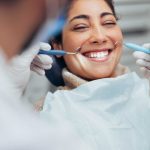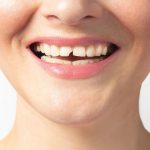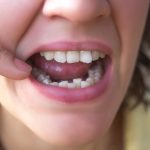Whiter Braces, Brighter Smile: Discover How to Make Your Teeth Shine with Braces
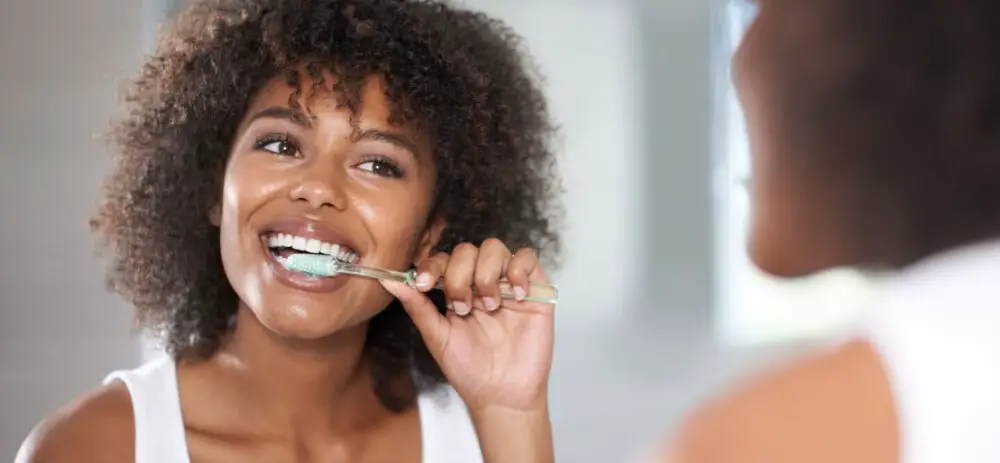
A bright, shining smile can light up the room and instantly boost your confidence. However, if you have braces, it can be challenging to achieve that perfect, pearly white smile you’ve always wanted. Don’t let your braces hold you back from having a beautiful smile; there are easy and effective ways to keep your teeth shining bright while wearing braces. In this article, we will explore some of the best tips and tricks for maintaining a bright and healthy smile while undergoing orthodontic treatment. Braces are an excellent investment in your oral health, but they can make it challenging to keep your teeth clean and healthy. The brackets and wires can trap food particles and bacteria, leading to discoloration and decay. However, with proper care and attention, you can keep your teeth looking their best while undergoing treatment. Whether you’re wearing traditional metal braces or clear aligners, we’ve got you covered with expert advice on how to maintain a bright, sparkling smile. Let’s dive in and discover how to make your teeth shine with braces!
Having a bright smile is not only aesthetically pleasing, but it also has a significant impact on one’s self-confidence and overall well-being. A bright smile can make a person appear more approachable, friendly, and attractive. It can also improve one’s social and professional relationships. A healthy, white smile is a sign of good oral hygiene and can boost one’s self-esteem. Moreover, research has shown that people with bright smiles tend to be perceived as more successful and trustworthy. Therefore, investing in maintaining a bright smile, even with braces, is essential for both physical and mental health.
Braces are an orthodontic appliance used to correct misaligned teeth and improve their appearance. They work by exerting pressure on the teeth, gradually moving them into the desired position over time. Braces consist of brackets, wires, and bands that are attached to the teeth and adjusted periodically by an orthodontist. While braces are commonly associated with teenagers, they can be effective for people of all ages who want to straighten their teeth. In addition to the cosmetic benefits of straight teeth, braces can also improve overall oral health by making it easier to clean teeth and reducing the risk of dental problems in the future. With advancements in orthodontic technology, braces today are more comfortable, discreet, and efficient than ever before.
The article \Whiter Braces Brighter Smile Discover How to Make Your Teeth Shine with Braces\ discusses various methods for maintaining a bright and healthy smile while wearing braces. The article suggests that braces can sometimes make it difficult to clean teeth properly, leading to discoloration and decay. To combat this issue, the article recommends regular brushing, flossing, and the use of mouthwash. Additionally, certain foods and beverages, such as coffee and red wine, should be avoided to prevent staining. The article also explores various teeth whitening options, including professional treatments and at-home remedies. By following these tips, individuals with braces can maintain a beautiful, healthy smile.
Choosing the Right Braces
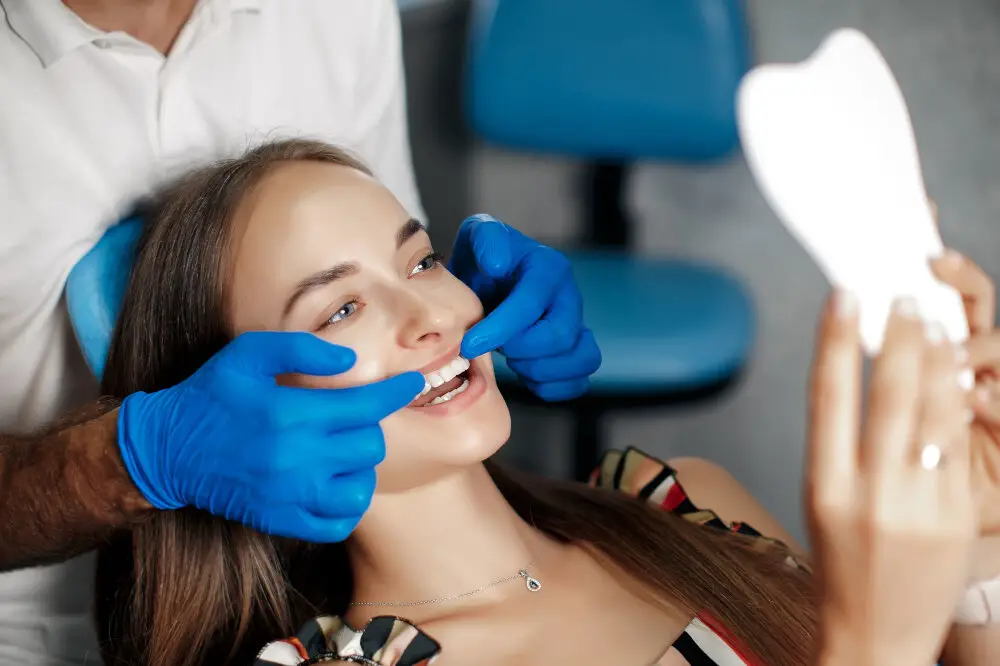
When it comes to choosing braces, there are a few important factors to consider. The first is the type of braces that will work best for your specific dental needs. Traditional metal braces are the most common type and are often the most effective for straightening teeth. However, if you are looking for a more discreet option, ceramic braces or clear aligners may be a better choice. Ceramic braces are similar to metal braces but are made from clear or tooth-colored materials, making them less noticeable. Clear aligners, such as Invisalign, are removable and virtually invisible, making them a popular choice for adults who want to straighten their teeth without the look of traditional braces. Another important factor to consider when choosing braces is the cost. Traditional metal braces are often the most affordable option, but other types of braces may be more expensive. Ceramic braces and clear aligners may cost more than metal braces, but they may also be covered by dental insurance. It is important to speak with your orthodontist about the cost of each option and what types of payment plans or financing options are available to you. Ultimately, the right braces for you will depend on your specific dental needs, budget, and personal preferences.
There are several types of braces available for those seeking to straighten their teeth or correct their bite. Metal braces are the most common type and consist of metal brackets and wires. Ceramic braces are similar to metal braces, but the brackets are made of a clear or tooth-colored material, making them less noticeable. Lingual braces are like traditional braces, but the brackets and wires are placed on the inside of the teeth, making them virtually invisible. Clear aligners, such as Invisalign, are a popular alternative to traditional braces, as they are made of clear plastic and can be removed when eating or brushing. Self-ligating braces are similar to traditional braces, but they use clips instead of elastics to hold the wires in place, reducing the need for adjustments. Ultimately, the type of braces chosen will depend on the individual’s needs and preferences, as well as the recommendations of their orthodontist.
When it comes to teeth straightening, there are several options available. Traditional metal braces are the most effective in terms of straightening teeth, but they also require regular adjustments and can cause discomfort and irritation. Ceramic braces are less noticeable than traditional braces, but they may not be as effective and can be more prone to staining. Lingual braces are the most inconspicuous option, as they are placed on the back of the teeth. However, they can be more difficult to clean and may require a longer treatment time. Clear aligners, such as Invisalign, are convenient and removable, but may not be as effective for more complex dental issues. Ultimately, the best option depends on the specific needs and preferences of the individual patient.
When it comes to selecting braces, it’s important to consider various factors to ensure that you choose the most suitable option for your needs. First and foremost, speak with your orthodontist to determine which type of braces will work best for your particular situation. Traditional metal braces are the most common, but there are also ceramic, lingual, and clear aligners to consider. You’ll want to take into account factors such as comfort, durability, visibility, and effectiveness when making your decision. Keep in mind that each type of braces has its own set of pros and cons, so it’s important to do your research and ask your orthodontist any questions you may have before making a final decision.
Maintaining Oral Hygiene with Braces
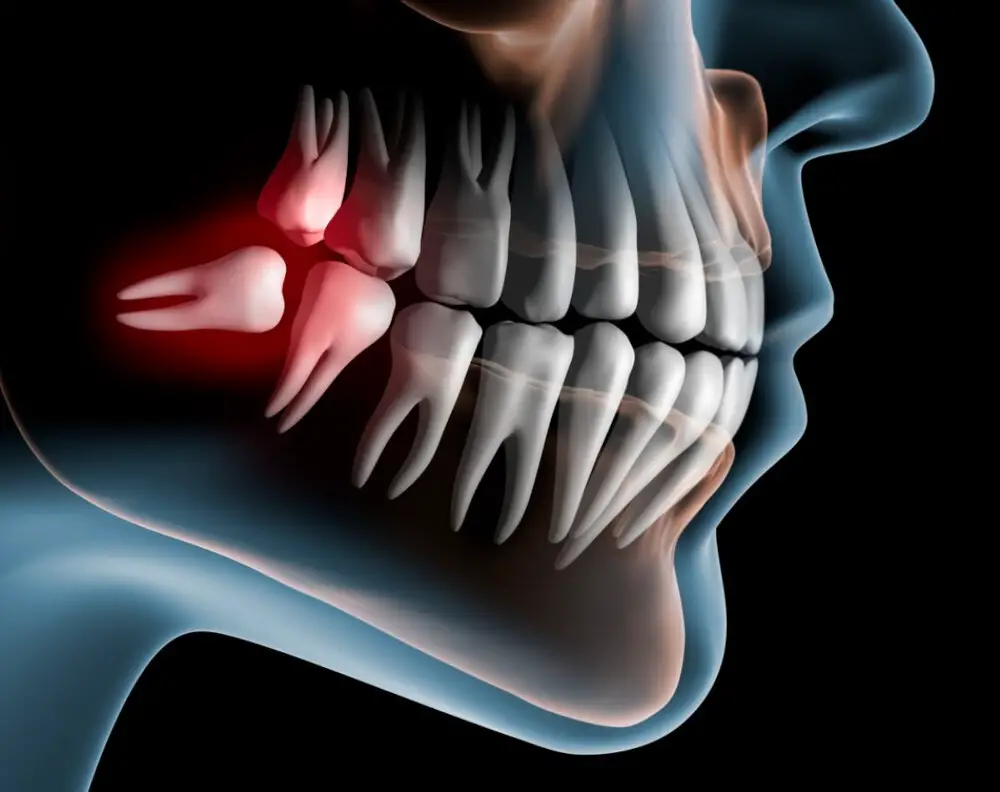
Maintaining oral hygiene with braces can seem challenging, but it is essential to keep your teeth and gums healthy during orthodontic treatment. Braces create small spaces between teeth that can trap food and plaque, leading to tooth decay and gum disease if not adequately cleaned. To maintain optimal oral hygiene, it is crucial to brush and floss regularly, ideally after every meal or snack. Braces require more extensive cleaning than regular teeth, so invest in a high-quality toothbrush with soft bristles and a fluoride toothpaste. Consider using an interdental brush or a water flosser to reach the tight spaces between teeth and under the wires. While brushing and flossing are critical, your diet also plays a significant role in maintaining oral hygiene with braces. Avoid sticky, sugary, and hard foods that can damage your braces and increase the risk of tooth decay. Opt for a balanced diet rich in fruits, vegetables, and lean proteins to promote overall dental health. Additionally, be sure to attend regular orthodontic appointments to ensure that your braces are correctly adjusted and any issues are addressed promptly. With proper care and attention, you can maintain excellent oral hygiene with braces, ensuring a brighter, healthier smile.
Maintaining oral hygiene with braces can be quite challenging, as the brackets and wires can trap food particles and make it difficult to brush and floss effectively. Additionally, braces can cause irritation and soreness in the mouth, which can make it uncomfortable to brush and floss regularly. Patients with braces should be extra diligent in their oral hygiene routine, brushing after every meal and flossing at least once a day. Special attention should be paid to cleaning around the brackets and wires, using interdental brushes or water flossers if necessary. Regular dental check-ups and cleanings are also important to ensure that the teeth and gums are healthy throughout the orthodontic treatment process.
Proper oral hygiene is crucial when wearing braces as they can easily trap food particles, plaque, and bacteria, leading to gum disease, bad breath, and even tooth decay. It is recommended to brush after every meal and floss at least once a day to remove any food particles that may be stuck between the teeth and braces. Moreover, using mouthwash can help kill bacteria and freshen breath, while regular dental checkups can ensure that any issues are detected early and treated before they become more serious. Taking care of your oral hygiene while wearing braces can not only lead to a brighter and healthier smile but also prevent any long-term damage to your teeth and gums.
Wearing braces can be a challenge in terms of maintaining good oral hygiene. However, there are several tips you can follow to ensure your teeth stay clean and healthy. Firstly, brush your teeth after every meal using a soft-bristled toothbrush. This will help remove any food particles that may have gotten trapped in your braces. Secondly, floss at least once a day to remove any debris between your teeth and braces. You can use special floss threaders that make it easier to get in between the wires. Finally, be mindful of what you eat and drink. Avoid sugary and sticky foods that can cause damage to your braces and teeth. By following these tips, you can help keep your teeth clean and bright while wearing braces.
Foods to Avoid with Braces
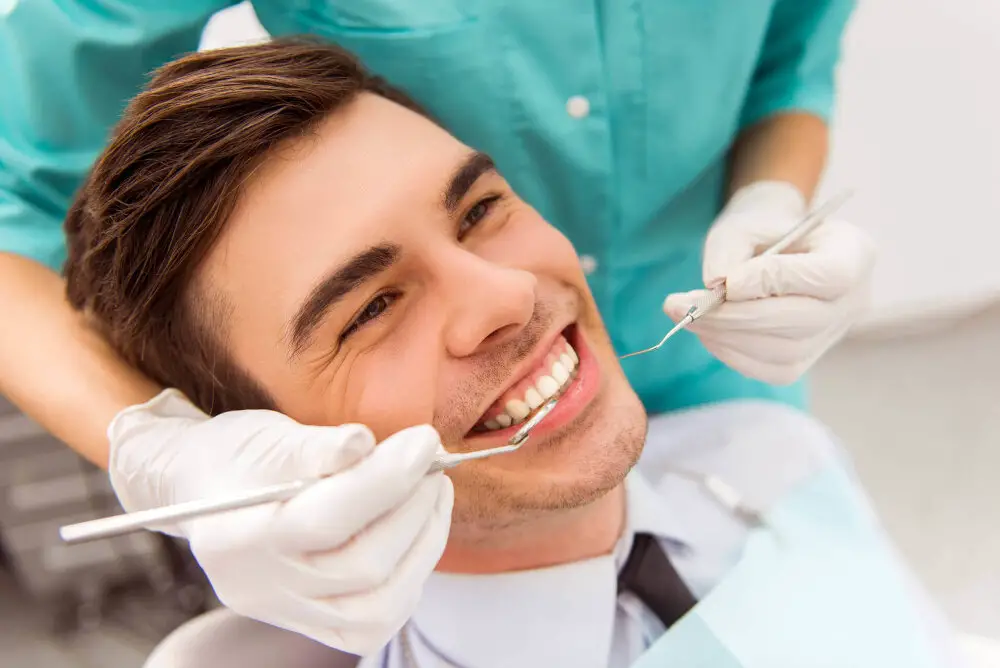
Wearing braces can be challenging, especially when it comes to eating. Certain foods can damage your braces, causing them to break or come loose. In general, you should avoid foods that are sticky, hard, or chewy. These include caramel, taffy, gum, popcorn, hard candy, and ice cubes. These foods can get stuck in your braces, making it difficult to clean your teeth properly. They can also cause wires and brackets to break, leading to discomfort and longer treatment times. In addition to sticky, hard, and chewy foods, you should also avoid foods that are high in sugar and acid. These include soda, sports drinks, fruit juice, and candy. Sugar and acid can damage your tooth enamel, leading to cavities and other dental problems. If you do consume sugary or acidic foods, make sure to rinse your mouth with water afterward and brush your teeth at least twice a day. With proper care and attention, you can maintain a healthy and beautiful smile while wearing braces.
Braces are a significant investment in your dental health, and they require proper care and maintenance to be effective. Certain foods can damage braces and cause problems such as broken brackets, wires, and even tooth decay. Hard and sticky foods like popcorn, hard candy, caramel, and chewing gum can damage braces by dislodging the brackets or wires. Additionally, sugary foods can cause tooth decay and cavities, which can be especially harmful when you have braces. It is essential to avoid these types of foods and opt for softer, healthier alternatives like fruits, vegetables, and dairy products. By choosing the right foods and taking good care of your braces, you can ensure that your teeth stay healthy and your smile stays bright throughout your orthodontic treatment.
When it comes to maintaining good oral health while wearing braces, it is important to be aware of the foods that can damage or stain your teeth and braces. Some examples of foods to avoid include sticky and chewy candy, such as caramel and taffy, as they can stick to your braces and teeth, increasing the risk of tooth decay. Hard and crunchy foods, like popcorn and hard candy, can also damage your braces and cause discomfort. Additionally, foods and drinks that are high in sugar or acidic, such as soda and citrus fruits, can erode your tooth enamel and lead to discoloration. By avoiding these foods and maintaining good oral hygiene habits, you can ensure a brighter and healthier smile even with braces.
Eating with braces can be challenging, but with a few tips, it can be a lot easier. Firstly, avoid hard, sticky, and chewy foods that can damage your braces or get stuck in them. Instead, opt for softer foods like cooked vegetables, fruits, and lean meats. Secondly, cut your food into smaller pieces to make it easier to chew and swallow. Thirdly, use your back teeth to chew instead of your front teeth. Fourthly, avoid sugary and acidic foods and drinks that can damage your teeth and braces. Finally, brush and floss regularly to keep your teeth and braces clean and healthy. By following these tips, you can still enjoy a variety of foods and maintain good oral hygiene while wearing braces.
Whitening Teeth with Braces
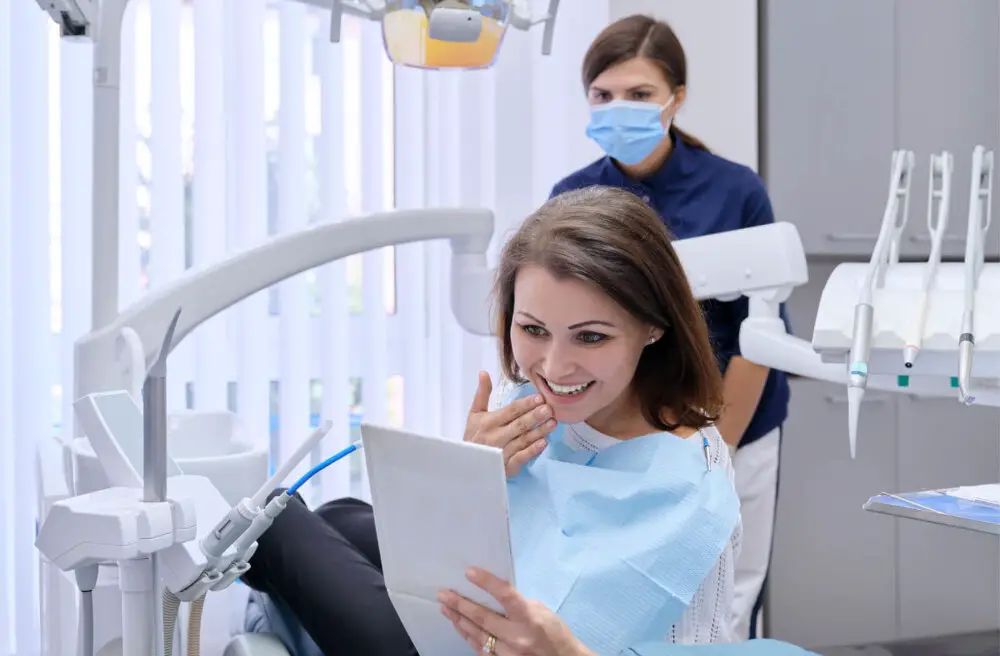
When it comes to whitening teeth with braces, there are a few things to keep in mind. First, it’s important to remember that traditional teeth whitening methods, such as bleaching or using whitening strips, may not be suitable for those with braces. This is because the brackets and wires can make it difficult to evenly distribute the whitening product, leading to uneven results. Additionally, certain whitening products can actually damage the braces themselves, which can be a costly and frustrating problem. However, there are still several ways to achieve a brighter, more radiant smile even with braces. One option is to focus on maintaining good oral hygiene throughout your treatment. This means brushing and flossing regularly, as well as avoiding foods and drinks that can stain your teeth, such as coffee, tea, and red wine. Additionally, there are specialized toothpastes and mouthwashes designed specifically for those with braces that can help remove surface stains and keep your teeth looking their best. By taking care of your teeth and braces properly, you can enjoy a whiter, brighter smile throughout your orthodontic treatment and beyond.
For people with braces, teeth whitening options may seem limited, but there are still several effective methods available. One option is to use whitening toothpaste, which can help remove surface stains and make teeth appear brighter. Another option is to use whitening strips or gels, which can be applied directly to the teeth and left on for a certain amount of time. It’s important to note that these methods may not work as well on teeth covered by braces, so it’s best to consult with a dentist or orthodontist before attempting to whiten your teeth while wearing braces. Additionally, avoiding foods and drinks that are known to stain teeth, such as coffee, tea, and red wine, can help maintain a brighter smile throughout the duration of your braces treatment.
Wearing braces doesn’t mean you can’t achieve a brighter smile. There are several tips that can help you maintain a healthy and shiny set of teeth while wearing braces. Firstly, make sure to brush your teeth thoroughly after every meal and use interdental brushes to clean between braces and teeth. Secondly, avoid foods that can stain your teeth, such as coffee, tea, red wine, and colored sodas. Thirdly, use whitening toothpaste and mouthwash to remove surface stains and keep your teeth looking fresh. Lastly, schedule regular dental check-ups to make sure your teeth and braces are clean and healthy. By following these tips, you can achieve a brighter smile and feel confident while wearing braces.
Whitening teeth with braces is a popular practice among people who want to enhance their smile. However, there are some precautions that need to be taken to avoid damaging the braces or causing harm to the teeth. Firstly, it is advisable to consult with an orthodontist before whitening teeth with braces. This will help to determine if the teeth are strong enough for the process. Secondly, it is important to use a whitening product that is safe for braces, such as a non-abrasive toothpaste or whitening gel. Thirdly, it is recommended to avoid eating staining foods and drinks, like coffee or red wine, during the whitening process. Lastly, it is important to brush and floss regularly to maintain oral hygiene and prevent any damage to the braces. By following these precautions, individuals can safely and effectively whiten their teeth with braces and achieve a brighter, more confident smile.
Braces play a crucial role in achieving a bright and beautiful smile. They fix misaligned teeth, crooked bites, and other dental issues that affect the appearance of teeth. They not only enhance the look of teeth but also improve their functionality, making it easier to chew, bite, and speak. Braces help in maintaining oral hygiene by facilitating easy cleaning and preventing tooth decay. Moreover, they boost confidence and self-esteem, allowing individuals to smile and interact without feeling self-conscious. With advancements in technology, braces are now available in a variety of materials, including ceramic, metal, and clear aligners, making them more comfortable and visually appealing. Therefore, investing in braces is a worthwhile decision for anyone looking to achieve a brighter smile.
The article \Whiter Braces Brighter Smile Discover How to Make Your Teeth Shine with Braces\ provides several tips and techniques for maintaining a bright and healthy smile while wearing braces. Firstly, it is essential to maintain good oral hygiene by brushing and flossing regularly and using a mouthwash. Secondly, consuming a balanced and nutritious diet and avoiding sugary and acidic foods can prevent tooth decay and staining. Thirdly, using whitening products such as toothpaste, strips, or gels can help remove surface stains. Lastly, visiting a dentist regularly for cleanings and check-ups can ensure that any potential issues are addressed promptly. By following these tips and techniques, individuals can achieve a whiter and brighter smile despite wearing braces.
Wearing braces is an investment in your oral health and appearance, but it also requires a commitment to proper dental care. Taking good care of your teeth while wearing braces is essential to achieving maximum results, both during and after treatment. Neglecting your oral hygiene during this time can result in discoloration, decay, and even permanent damage to your teeth. To maintain a bright, healthy smile, be sure to brush and floss regularly, avoid sugary and acidic foods and drinks, and visit your orthodontist for regular checkups. Remember, the effort you put into caring for your teeth during this time will pay off in a beautiful, confident smile that lasts a lifetime.
Conclusion
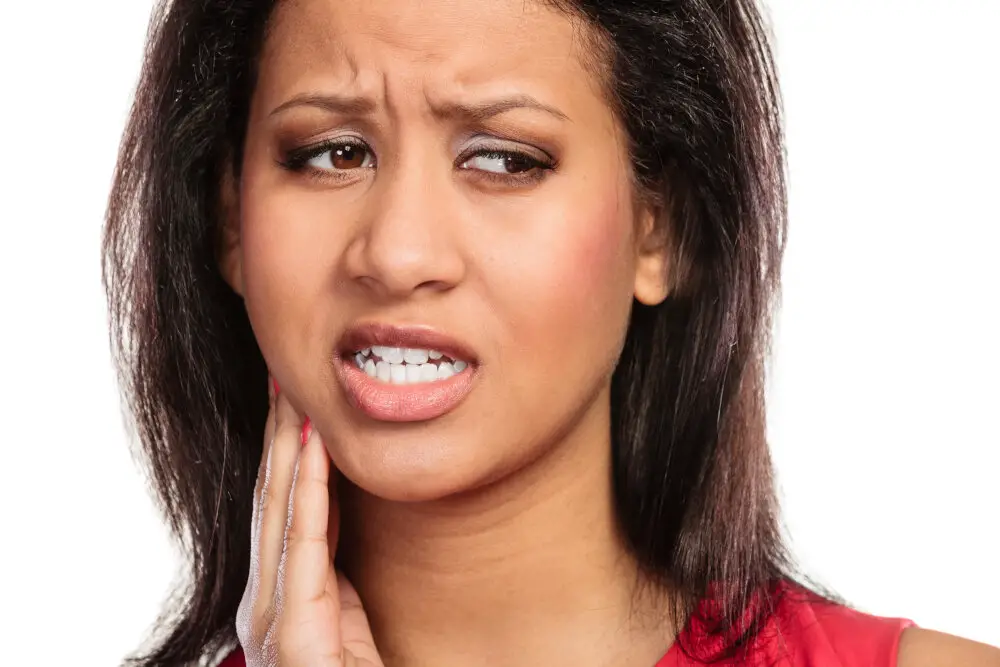
In conclusion, having braces should not hold you back from having a bright and beautiful smile. While it may require a bit of extra effort and care, there are many ways to keep your teeth shining while wearing braces. From using whitening products specifically designed for braces to practicing good oral hygiene and avoiding certain foods and drinks, you can achieve a whiter and brighter smile. So don’t let braces dull your confidence, embrace the challenge and enjoy the journey towards a healthier and more radiant smile.

